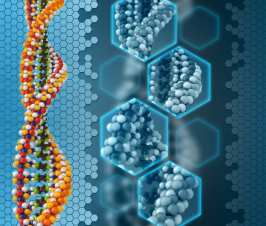Maggie Martin
@MaggieBiosource
mmunen the early 1980s, homosexual men in the San Francisco area began contracting and dying from unusual infections in the setting of immunodeficiency characterized by specific depletion of a subset of white blood cells, known as helper T cells or CD4+ T cells. This was the initial presentation of the acquired immunodeficiency syndrome or AIDS. Within a few years, the human immunodeficiency virus (HIV) was discovered as the etiologic agent for AIDS: those who were infected with HIV would ultimately develop AIDS. Since that time, almost thirty years later, the number of individuals who are infected with HIV has skyrocketed. According to the World Health Organization, in 2007 there were 33 million people infected with HIV worldwide (over 1 million in the United States and 22 million in Sub-Saharan Africa), with 2 million of these HIV-positive individuals losing their lives to AIDS (over 20,000 in the United States and 1.5 million in Sub-Saharan Africa).
Scientists have characterized HIV at the molecular level and have used this information to develop drugs to treat HIV infection, but the fundamental problem caused by HIV that is, how HIV causes AIDS has not yet been solved. HIV infection depletes the body of a subset of white blood cell cells known as CD4+ or helper T cells. Since helper T cells play an important role in the immune system’s ability to ward off infection, gradual depletion of these cells eventually leaves the HIV+ individual susceptible to opportunistic infections that are normally harmless to people with healthy immune systems (this is the definition of AIDS). It is possible that if the mechanism for the depletion of helper T cells during HIV infection were known, it could be therapeutically targeted, transforming HIV from a lethal infection to a harmless nuisance.
From the discovery of AIDS epidemic in the early to mid 1980s, it has been well documented that HIV infects helper T cells and kills them. This fact and landmark work by David Ho and colleagues at the Aaron Diamond AIDS Research Center at Rockefeller University in the mid to late-1990s led to the proposal of the tap and drain model of helper T cell depletion, which states that HIV causes AIDS by killing more helper T cells than the body can produce. This is reflected clinically by a declining CD4 count in HIV+ individuals. However, more recently there has been a preponderance of scientific evidence against the tap and drain model of helper T cell depletion in HIV. For one, the amount of HIV detected in the blood (i.e., the viral load) reflecting how much HIV is infecting helper T cells correlates poorly at best with the CD4 count. In other words, increased HIV replication and increased viral blood level do not cause a decrease in CD4 count. Moreover, when dying helper T cells were taken from HIV+ individuals and studied, it was found that over 99% of these cells were not infected. These findings, in addition to others, have led many scientists to turn away from infection and direct killing of helper T cells to another mechanism for how HIV causes AIDS.
A helper T cell may exist in either a resting state, as a nave or memory cell, until it is activated by contact with a specific antigen. In the setting of chronic HIV infection with constant presence of virus particles, it is not surprising that a greater fraction of CD4+ T cells in HIV+ individuals would be activated at any given time. However, it has been observed in HIV+ individuals that higher activated fractions of CD4+ T cells correlate with lower CD4 counts.
This correlation is actually quite strong and has led many scientists and physicians to believe that chronic activation of the helper T cell population plays a role in the progression of HIV to AIDS. Most recently, chronic activation of helper T cells during HIV infection has been found to take place in the presence of interferon, a chemical signal secreted by white blood cells in the body to fight off viral infections. A role for interferon signaling in the progression of AIDS was strongly suggested when certain species of primates which are infected with SIV, the primate virus from which HIV is believed to have evolved, and do not develop AIDS were found to have absent interferon secretion in response to chronic SIV infection while primate species that develop AIDS demonstrate high levels of interferon secretion during SIV infection.
If activation of helper T cells and/or interferon signaling is involved in the progression of AIDS, this poses a dilemma in the development of medical interventions. Both activation of helper T cells and interferon signaling are necessary components in the development of a robust immune response thus, neutralization of either may actually leave the HIV+ individual more susceptible to the effects of HIV infection. As a result, a direct intervention in the mechanism of helper T cell depletion may be a therapeutic catch-22. For now, treatment of HIV infection centers around inhibition of viral replication, which indirectly stops the progression to AIDS. And while a vast improvement from the treatments of the 80s and 90s, many medications used today for HIV infection unfortunately still have significant side effects. Moreover, there are significant numbers of HIV+ individuals who are resistant to the HIV medications that are available. Therefore a therapeutic intervention in the exact mechanism through which HIV causes AIDS would serve as universally effective therapy until a cure is developed.
Maggie Martin is completing her PhD in Cell Biology, works as lab tech for MyBiosource.com and contributes content on Biotech, Life Sciences and Viral Outbreaks. Follow her on Twitter @MaggieBiosource

















